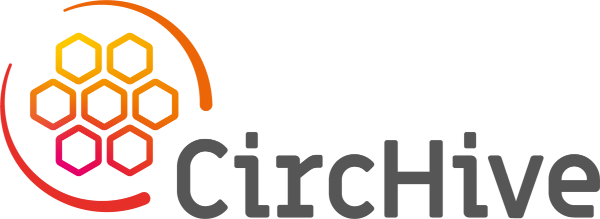The CircHive BeeHive is a community of private and public sector organisations using biodiversity footprinting and natural capital accounting methods to protect ecosystems, enhance biodiversity and unlock new opportunities.
The BeeHive is focused around five sectoral hubs: Food, biomaterials, retailers, investors, green cities. Join the hub most relevant to you to discover networking and engaging opportunities and connect with like-minded businesses and public sector organisations.
In the BeeHive workspace hub we’ll be sharing the resources and outputs the CircHive project is creating. Explore the workspace hub to be the first to access and contribute to CircHive’s outputs.
Join
The CircHive BeeHive is an online space where you can, in real-time, explore and provide feedback on what the CircHive team is working on.
In the BeeHive, The CircHive team is regularly posting short updates and asking for comments or feedback. We’re also sharing news and upcoming events that are relevant to our work.
After creating a basic account, you’ll be able to post comments to provide your feedback and also post your own questions for the CircHive team or any other BeeHive member to respond to.
Join the BeeHive to connect with our team and be the first to hear about CircHive updates.
Latest posts
Mainstreaming biodiversity in ESG: review of disclosure requirements
Log-in or Register to add comment.
Nature-based Solutions and climate

3 comments
Webinar: Biodiversity requirements in the food sector

6 comments

July 27, 2023, 3:05 pm
1 adipiscing elit, sed do eiusmod tempor incididunt ut labore et dolore magna aliqua. Ut enim ad minim veniam, quis nostrud exercitation ullamco laboris nisi ut aliquip ex ea commodo consequat. Duis aute irure dolor in reprehenderit in voluptate velit esse cillum dolore eu fugiat nulla pariatur. Excepteur sint occaecat cupidatat non proident, sunt in culpa qui officia deserunt mollit anim id est laborum.

July 27, 2023, 3:05 pm
2 adipiscing elit, sed do eiusmod tempor incididunt ut labore et dolore magna aliqua. Ut enim ad minim veniam, quis nostrud exercitation ullamco laboris nisi ut aliquip ex ea commodo consequat. Duis aute irure dolor in reprehenderit in voluptate velit esse cillum dolore eu fugiat nulla pariatur. Excepteur sint occaecat cupidatat non proident, sunt in culpa qui officia deserunt mollit anim id est laborum.

July 27, 2023, 3:05 pm
adipiscing elit, sed do eiusmod tempor incididunt ut labore et dolore magna aliqua. Ut enim ad minim veniam, quis nostrud exercitation ullamco laboris nisi ut aliquip ex ea commodo consequat. Duis aute irure dolor in reprehenderit in voluptate velit esse cillum dolore eu fugiat nulla pariatur. Excepteur sint occaecat cupidatat non proident, sunt in culpa qui officia deserunt mollit anim id est laborum.

July 27, 2023, 3:08 pm
Duis aute irure dolor in reprehenderit in voluptate velit esse cillum dolore eu fugiat nulla pariatur. Excepteur sint occaecat cupidatat non proident, sunt in culpa qui officia deserunt mollit anim id est laborum.

August 4, 2023, 10:34 am
Excepteur sint occaecat cupidatat non proident, sunt in culpa qui officia deserunt mollit anim id est laborum.

July 27, 2023, 3:05 pm
adipiscing elit, sed do eiusmod tempor incididunt ut labore et dolore magna aliqua. Ut enim ad minim veniam, quis nostrud exercitation ullamco laboris nisi ut aliquip ex ea commodo consequat. Duis aute irure dolor in reprehenderit in voluptate velit esse cillum dolore eu fugiat nulla pariatur. Excepteur sint occaecat cupidatat non proident, sunt in culpa qui officia deserunt mollit anim id est laborum.




September 18, 2023, 1:17 pm
This is the best blog I've ever read!!!
September 18, 2023, 1:17 pm
I agree this blog is just brilliant!
September 18, 2023, 1:17 pm
I agree this blog is amazing :)